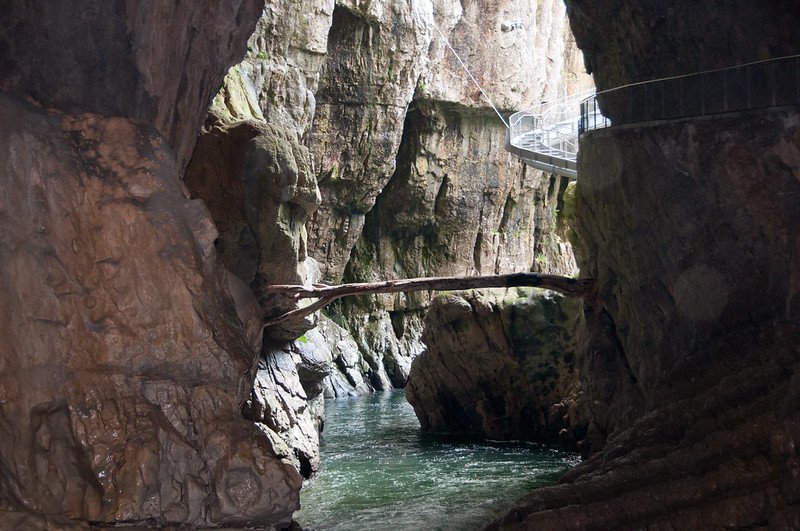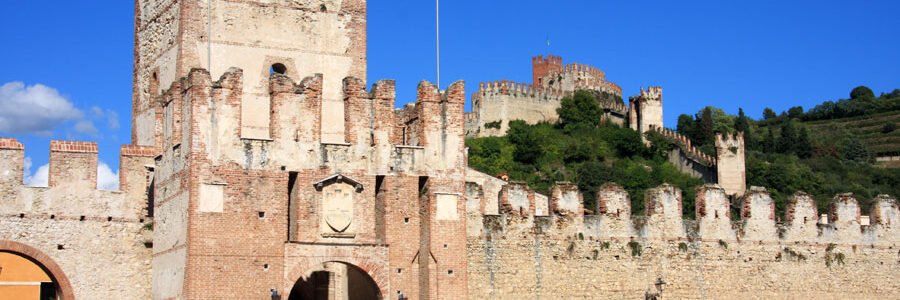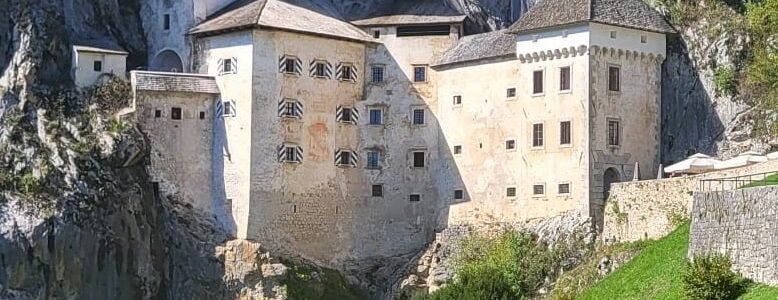Skocjan Caves Guide
Skocjan Caves Guide
Skocjan Caves
Southwestern Slovenia hides a masterpiece of nature – the Skocjan Caves. This UNESCO World Heritage site draws travelers with underground rivers, giant halls, and landscapes that feel almost unreal. If your trip takes you across Istria towards Austria, this wonder can easily be part of the journey. Many travelers, when planning a transfer from Opatija to Graz, include the caves as a remarkable stopover that adds depth to the trip.
Why They Matter
Skocjan Caves are far more than a tourist attraction. Archaeological evidence proves that humans were present here thousands of years ago, leaving behind traces of rituals, settlements, and stories. This cultural link combines with geology to create a site of double importance – both human and natural. UNESCO placed it on the list not only for the massive halls and the river, but also for its role in European heritage. Standing here connects you with nature and with people who lived under the same cliffs millennia ago.
The Underground River
The Reka River is the cave’s beating heart. It begins above ground, flows for miles, then suddenly disappears into the karst. Inside, it carves vast chambers, drops into waterfalls, and thunders through canyons deep beneath the surface. The sound is constant – sometimes distant, sometimes deafening – and it gives the entire journey a dramatic atmosphere.
Walking along narrow carved paths or across suspended bridges is thrilling. The river rushes far below, mist rises from the rapids, and echoes bounce from wall to wall. Many visitors say this moment feels closer to an adventure movie than a guided tour.
Immense Chambers
If one feature leaves everyone speechless, it is Martel’s Hall. Measuring more than 300 meters in length and nearly 150 meters in height, it rivals some of the world’s largest cathedrals. Standing inside, you realize how small humans are compared to geological time. Other halls reveal stalactites like chandeliers, bridges naturally carved in stone, and endless dark corners waiting to be explored.
People often stop talking here. The silence, broken only by the sound of dripping water, is almost ceremonial. It feels as though you are witnessing something sacred created by the Earth itself.
Life in the Darkness
Despite the harsh conditions, life adapts. Bats cling to the ceilings, rare insects crawl in the cracks, and small aquatic animals swim in the underground streams. Many of these species are unique to karst environments.
Above the caves, the regional park bursts with contrast. Meadows and Mediterranean plants cover the limestone plateau, reminding visitors how closely surface life and underground worlds are connected.
The Regional Park
Outside the caves, trails lead to wide viewpoints over the valley. Villages with stone houses and red rooftops dot the horizon, while educational paths explain how water sculpts limestone into caves, gorges, and sinkholes.
Some travelers skip the hike, but that’s a mistake. The park offers calm surroundings and helps you understand the caves in context. Spending even an hour above ground enriches the whole experience.
The Visitor Experience
Entry is possible only with a guide. This ensures both safety and preservation of delicate formations. Tours run about 90 minutes to two hours and are offered in several languages.
Be prepared for cool temperatures – around 12°C year-round. Comfortable shoes are essential because the paths are uneven and sometimes damp. A light jacket makes the difference between comfort and distraction.
Practical Travel Tips
Arrive early during peak summer. Tickets often sell out by midday, and group sizes are limited. If you’re driving, parking is close to the entrance. Cafés and small shops provide a chance to relax before or after the tour.
Public buses connect the caves with Divača and nearby towns. While possible without a car, most visitors find driving more flexible, especially if combining the caves with other regional attractions.
Nearby Attractions
The caves are just one highlight in this part of Slovenia. Divača has small museums and cultural spots. Lipica Stud Farm, home to the famous white Lipizzaner horses, lies a short drive away. Wine lovers will appreciate the Karst Plateau, where the bold red Teran wine is produced in local vineyards.
A day trip can easily mix nature, culture, and food. Exploring the caves in the morning, visiting Lipica in the afternoon, and ending with a vineyard dinner is a rhythm many travelers enjoy.
Legends and Stories
Centuries ago, locals imagined that spirits lived in the caves and that the underground river carried souls to the sea. These myths gave Skocjan a sense of danger and mystery.
Even with science explaining every formation, the feeling of myth remains. Standing in the dark, listening to the thunder of the river far below, it is easy to understand why people once filled these halls with legends.
Why You Should Visit
Slovenia is known for Lake Bled, Ljubljana, and Piran – yet Skocjan offers something those places cannot. Here you descend into the earth itself, experiencing scale and sound unlike anywhere else. On the surface, you find trails, villages, and culture.
This mix of raw adventure and peaceful discovery makes it perfect for all kinds of travelers. Whether a short stopover or a full-day exploration, the memory stays vivid long after you leave.
At the end
Skocjan Caves are not just a natural wonder but a full experience. With giant chambers, an underground river, and a surrounding park filled with history and culture, they rank among Europe’s most unforgettable destinations.
For official information on tours and seasonal details, see the Skocjan Caves official website.
Škocjan Caves Guide
Škocjan Caves Guide introduces one of Slovenia’s most remarkable natural landmarks, known for its vast underground canyon and unique karst formations. Paths through the cave system are well-marked, making it accessible while still impressive in scale and atmosphere.
As part of longer drives across Slovenia and northern Adriatic regions, Škocjan Caves serve as a practical and memorable stop between major cities and coastal towns.
- Graz to Opatija transfer route
- Opatija to Graz transfer option
- Zagreb to Trieste direct transfer
- Trieste to Zagreb private ride
- Ljubljana to Pula connection
- Pula to Ljubljana transfer service
Škocjan Caves Guide: Natural Wonder on the Road
- UNESCO World Heritage site with a vast underground canyon
- Accessible guided tours with clear walking paths
- Good stopover when driving between Austria, Slovenia, and Croatia
- Close to highways and easy to include in transfers
- Blend of nature, geology, and cultural heritage
A Highlight for Travelers Crossing the Region
Škocjan Caves Guide helps you plan your visit easily
Check tour times, entry details, and visitor information on the Škocjan Caves official site.
RECENT POSTS
- How to get from Trieste to Zagreb October 21, 2025
- How to get from Ljubljana to Kranjska Gora October 18, 2025
- How to get from Ljubljana to Budapest October 17, 2025





























































Leave a Comment